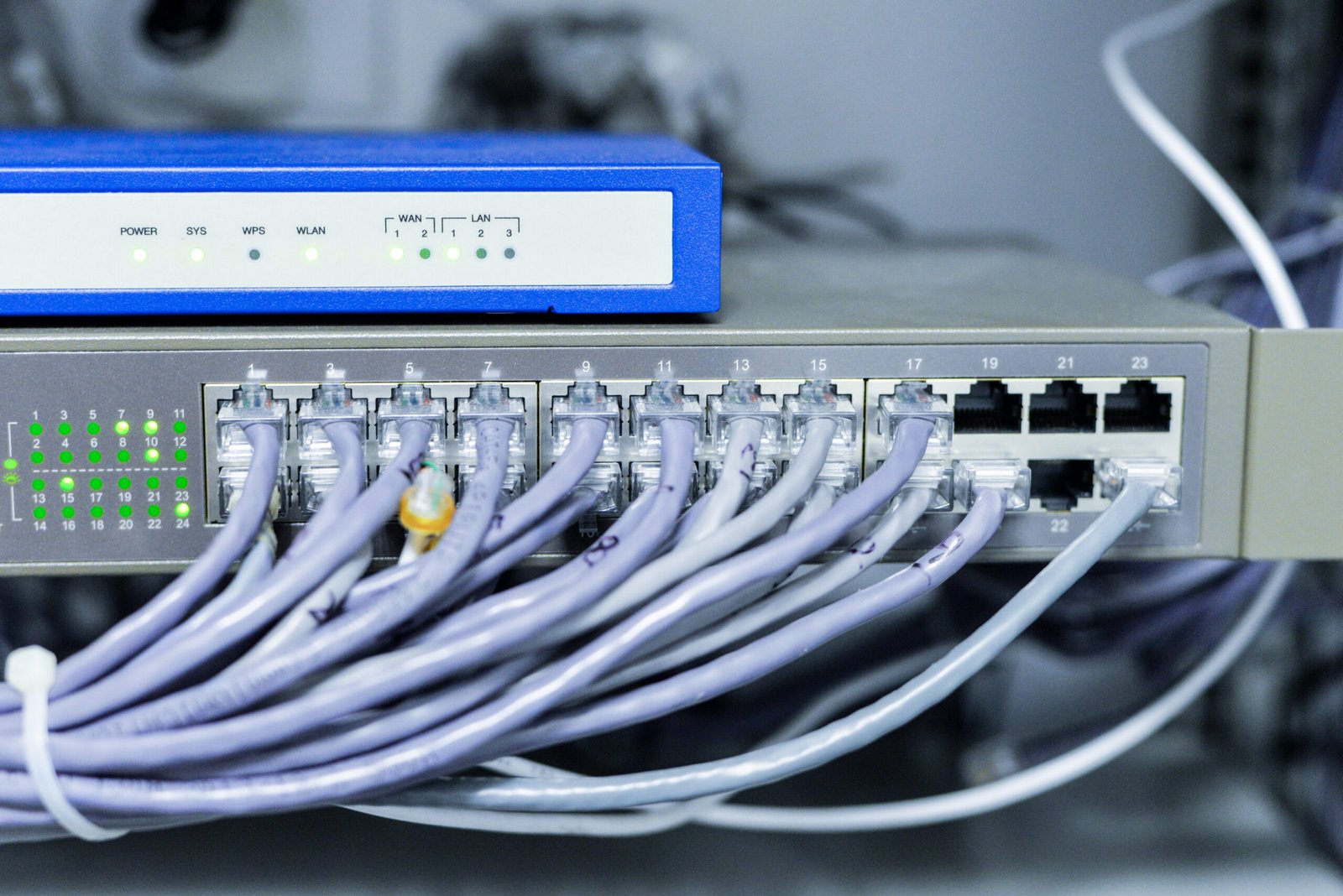Giga ethernet protocol data. Role in Business Networks

Subtitle: Navigating the Speed, Reliability, and Cost Benefits
Introduction
Modern companies are built on network infrastructure, which keeps operations safely, effectively, and free from faults functioning. Among all the developments in networking, “Giga ethernet protocol data” is one that has fundamentally changed expectations for dependability and speed in data transport.
But what transforms “Giga ethernet protocol data” so powerfully? How has it transformed network connectivity, and why ought companies to seek to include it into their daily operations? This paper comprehensively examines these concerns, with a focus on the practical applications, forthcoming trends, and development of Ethernet.
1. What Exactly is Gigabit Ethernet and How Does It Differ from Standard Ethernet?
One billion bits per second is the maximum speed at which “Giga ethernet protocol data” can transfer data. Compared to Fast Ethernet, which has a 100 Mbps maximum, this is far faster.
Key Features of Gigabit Ethernet Compared to Standard Ethernet:
- Higher Data Speeds: Downloads data around ten times faster than Fast Ethernet.
- Improved Reliability: Its capacity to manage more data volumes with less delays increases operational dependability.
- Cost Considerations:Setup expenses are higher at initially, but they pay off by increasing productivity and operating efficiency.
The IEEE defined Gigabit Ethernet in the late 1990s. It now helps organizations switch to quicker, more efficient networks.
2. How Has Gigabit Ethernet Revolutionized Network Speeds and Connectivity?
The days of aggravating bandwidth problems are gone. For network speeds and connectivity, Gigabit Ethernet has been a revolution. It allows:
Seamless Data Transfers:Even big files, such as vast databases or high-quality films, can be distributed practically immediately.
- Enhanced Reliability: Gigabit Ethernet sharply lowers packet loss and lowers latency.
Scalability makes it future-ready for developing companies since it can effectively accommodate an increasing number of linked devices.
Modern organizations use video conferencing, data synchronization, and remote collaboration technologies, but Gigabit Ethernet provides reliable, uninterrupted connectivity.
3. What Are the Real-World Benefits of Implementing Gigabit Ethernet in Business Networks?
Both big and small companies will gain much from the choice to use Gigabit Ethernet.
Business Benefits:
- Improved Operational Efficiency
Faster departmental communications made possible by Gigabit Ethernet help companies process data more effectively.
- Enhanced User Experience
Whether through speedier page load times, continuous video chats, or instant access to cloud-based apps, employees and consumers both appreciate flawless interactions.
Scalability and Future-Proofing
Gigabit Ethernet offers the capacity required to scale activities without sacrificing performance as bandwidth demand rises.
- Environmental Benefits
By using better energy-efficient technology than previous standards, Gigabit Ethernet helps companies run more ecologically friendly IT systems.
4. What Are the Technical Specifications and Infrastructure Requirements for Deploying Gigabit Ethernet?
Often upgrading to Gigabit Ethernet calls for changes to current infrastructure. Organizations should take these factors under account while getting ready for deployment.
Hardware Requirements:
- Gigabit speed supporting switches and routers according to the 802.3ab standard.
- High-speed data transferable Ethernet cables including Cat 5e, Cat 6, or Cat 6a cables.
Software Configurations:
Make sure network monitoring tools are set up to maximize your just upgraded infrastructure’s performance.
Additional Considerations:
- Gigabit Ethernet’s high bandwidth requirements are best served by network backbones built from fiber optic connections.
- Using QoS (Quality of Service) will help to give bandwidth for important corporate operations first priority.
By thinking through compatibility with 10 Gigabit Ethernet, you may future-proof your infrastructure and save money in next updates.
5. What Challenges and Considerations Should Businesses Keep in Mind When Upgrading to Gigabit Ethernet?
Even if Gigabit Ethernet has many advantages, companies could run against some difficulties during deployment.
Common Challenges:
- Infrastructure Costs
Older networks must be upgraded to handle Gigabit Ethernet-capable technology, which can be somewhat expensive initially.
- Compatibility Issues
Legacy systems might call for updates or replacements and might not handle Gigabit data speeds.
- Training and Support
To properly set and run the new systems, IT workers could need training.
Strategies to Overcome Challenges:
- Plan your staggered rollout to spread expenses over time.
Before starting the upgrading process, find compatibility.
To guarantee seamless adoption, provide staff members—including IT professionals—training.
6. Can You Provide Examples of Successful Gigabit Ethernet Implementations in Diverse Industries?
Case Study 1: Financial Corporation
A multinational financial company upgraded to Gigabit Ethernet, therefore improving data transfer rates for handling worldwide transactions. That yields Faster cross-office cooperation and higher customer satisfaction resulting from lower downtime.
Case Study 2: Healthcare Institution
Gigabit Ethernet was integrated into a hospital’s network infrastructure to enable immediate remote access to patient records and dependable telemedicine services.
Case Study 3: E-Commerce Platform
A hospital enhanced its network to gigabit Ethernet to guarantee the instantaneous availability of patient information from a distance and the reliable operation of telemedicine.
7. What’s the Future of Gigabit Ethernet and How Might It Shape the Next Generation of Network Technologies?
Even if Gigabit Ethernet has revolutionized network architecture, even more remarkable shifts are imminent.
What’s Next?
- 10 Gigabit Ethernet & Beyond
Already finding popularity for data centers and business networks with even more bandwidth needs is 10 Gigabit Ethernet.
- Greener Networks
Energy-efficient designs are being included into Ethernet standards more and more, allowing companies to reduce their environmental effect.
- AI-Optimized Networking
Emerging trends include using artificial intelligence to automate network administration, therefore transforming networks into smarter, more secure entities.
Preparing for Tomorrow
Companies who make Gigabit Ethernet investments now are laying the groundwork for a flawless migration to these next-generation technologies.
Conclusion
“Giga ethernet protocol data” is a portal to contemporary, scalable, dependable business processes, not only a faster network standard. Businesses that switch to Gigabit Ethernet can increase user experiences, boost productivity, and get ready for the needs of the digital terrain of tomorrow.
Ready for the Giga Shift is your company? Use Gigabit Ethernet to start improving your network and open fresh opportunities.


